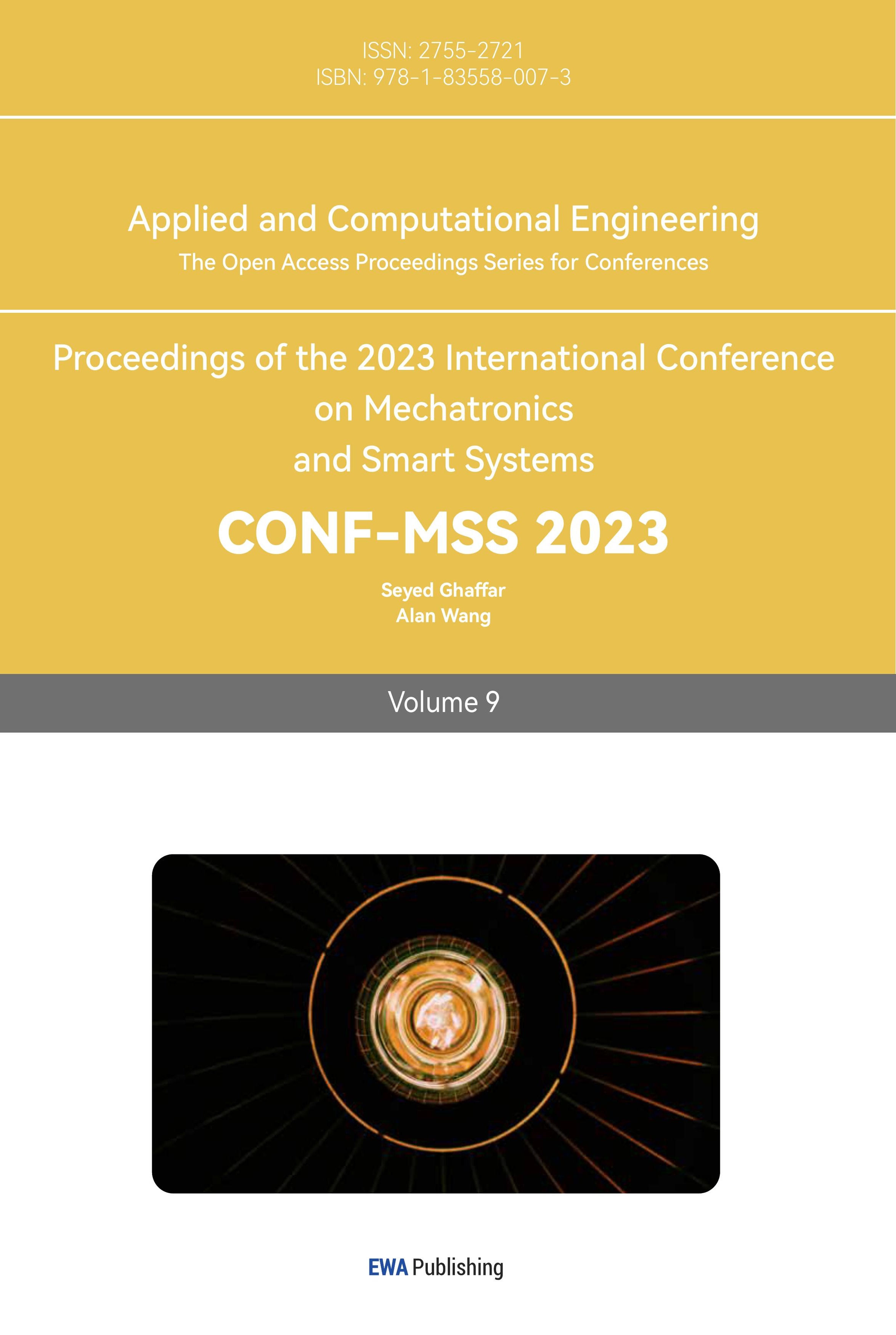References
[1]. S. Wong, F. Duarte and S. Vassiliadis, "A hardware cache memcpy accelerator," 2006 IEEE International Conference on Field Programmable Technology, Bangkok, Thailand, 2006, pp. 141-148.
[2]. T. Kalkhof and A. Koch, "Direct Device-to-Device Physical Page Migrations in Multi-FPGA Shared Virtual Memory Systems," 2022 32nd International Conference on Field-Programmable Logic and Applications (FPL), Belfast, United Kingdom, 2022, pp. 225-234.
[3]. "ISO/IEC/IEEE International Standard for Information technology--Microprocessor systems--Control and Status Registers (CSR) Architecture for microcomputer buses," in ISO/IEC 13213: 1994, vol., no., pp.1-144, 5 Oct. 1994.
[4]. B. Zeng, “What is Direct Memory Access (DMA)? - Definition from WhatIs.com,” WhatIs.com, 2022. https://www.techtarget.com/whatis/definition/Direct-Memory-Access-DMA
[5]. W. Su, L. Wang, M. Su and S. Liu, "A Processor-DMA-Based Memory Copy Hardware Accelerator," 2011 IEEE Sixth International Conference on Networking, Architecture, and Storage, Dalian, China, 2011, pp. 225-229.
[6]. F. Duarte and S. Wong, "Cache-Based Memory Copy Hardware Accelerator for Multicore Systems," in IEEE Transactions on Computers, vol. 59, no. 11, pp. 1494-1507, Nov. 2010.
[7]. S. Vassiliadis, F. Duarte and S. Wong, "A Load/Store Unit for a Memcpy Hardware Accelerator," 2007 International Conference on Field Programmable Logic and Applications, Amsterdam, Netherlands, 2007, pp. 537-541.
[8]. U. S. Solangi, M. Ibtesam, M. A. Ansari, J. Kim, and S. Park, “Test Architecture for Systolic Array of Edge-Based AI Accelerator,” IEEE Access, vol. 9, pp. 96700–96710, 2021.
[9]. F. Duarte and S. Wong, "A memcpy Hardware Accelerator Solution for Non Cache-line Aligned Copies," 2007 IEEE International Conf. on Application-specific Systems, Architectures and Processors (ASAP), Montreal, QC, Canada, 2007, pp. 397-402.
[10]. W. Muła and D. Lemire, “Base64 encoding and decoding at almost the speed of a memory copy,” Software: Practice and Experience, vol. 50, no. 2, pp. 89–97, Nov. 2019.
Cite this article
Shen,S. (2023). Theoretical analysis and comparison of memory copy accelerators. Applied and Computational Engineering,9,295-302.
Data availability
The datasets used and/or analyzed during the current study will be available from the authors upon reasonable request.
Disclaimer/Publisher's Note
The statements, opinions and data contained in all publications are solely those of the individual author(s) and contributor(s) and not of EWA Publishing and/or the editor(s). EWA Publishing and/or the editor(s) disclaim responsibility for any injury to people or property resulting from any ideas, methods, instructions or products referred to in the content.
About volume
Volume title: Proceedings of the 2023 International Conference on Mechatronics and Smart Systems
© 2024 by the author(s). Licensee EWA Publishing, Oxford, UK. This article is an open access article distributed under the terms and
conditions of the Creative Commons Attribution (CC BY) license. Authors who
publish this series agree to the following terms:
1. Authors retain copyright and grant the series right of first publication with the work simultaneously licensed under a Creative Commons
Attribution License that allows others to share the work with an acknowledgment of the work's authorship and initial publication in this
series.
2. Authors are able to enter into separate, additional contractual arrangements for the non-exclusive distribution of the series's published
version of the work (e.g., post it to an institutional repository or publish it in a book), with an acknowledgment of its initial
publication in this series.
3. Authors are permitted and encouraged to post their work online (e.g., in institutional repositories or on their website) prior to and
during the submission process, as it can lead to productive exchanges, as well as earlier and greater citation of published work (See
Open access policy for details).
References
[1]. S. Wong, F. Duarte and S. Vassiliadis, "A hardware cache memcpy accelerator," 2006 IEEE International Conference on Field Programmable Technology, Bangkok, Thailand, 2006, pp. 141-148.
[2]. T. Kalkhof and A. Koch, "Direct Device-to-Device Physical Page Migrations in Multi-FPGA Shared Virtual Memory Systems," 2022 32nd International Conference on Field-Programmable Logic and Applications (FPL), Belfast, United Kingdom, 2022, pp. 225-234.
[3]. "ISO/IEC/IEEE International Standard for Information technology--Microprocessor systems--Control and Status Registers (CSR) Architecture for microcomputer buses," in ISO/IEC 13213: 1994, vol., no., pp.1-144, 5 Oct. 1994.
[4]. B. Zeng, “What is Direct Memory Access (DMA)? - Definition from WhatIs.com,” WhatIs.com, 2022. https://www.techtarget.com/whatis/definition/Direct-Memory-Access-DMA
[5]. W. Su, L. Wang, M. Su and S. Liu, "A Processor-DMA-Based Memory Copy Hardware Accelerator," 2011 IEEE Sixth International Conference on Networking, Architecture, and Storage, Dalian, China, 2011, pp. 225-229.
[6]. F. Duarte and S. Wong, "Cache-Based Memory Copy Hardware Accelerator for Multicore Systems," in IEEE Transactions on Computers, vol. 59, no. 11, pp. 1494-1507, Nov. 2010.
[7]. S. Vassiliadis, F. Duarte and S. Wong, "A Load/Store Unit for a Memcpy Hardware Accelerator," 2007 International Conference on Field Programmable Logic and Applications, Amsterdam, Netherlands, 2007, pp. 537-541.
[8]. U. S. Solangi, M. Ibtesam, M. A. Ansari, J. Kim, and S. Park, “Test Architecture for Systolic Array of Edge-Based AI Accelerator,” IEEE Access, vol. 9, pp. 96700–96710, 2021.
[9]. F. Duarte and S. Wong, "A memcpy Hardware Accelerator Solution for Non Cache-line Aligned Copies," 2007 IEEE International Conf. on Application-specific Systems, Architectures and Processors (ASAP), Montreal, QC, Canada, 2007, pp. 397-402.
[10]. W. Muła and D. Lemire, “Base64 encoding and decoding at almost the speed of a memory copy,” Software: Practice and Experience, vol. 50, no. 2, pp. 89–97, Nov. 2019.









